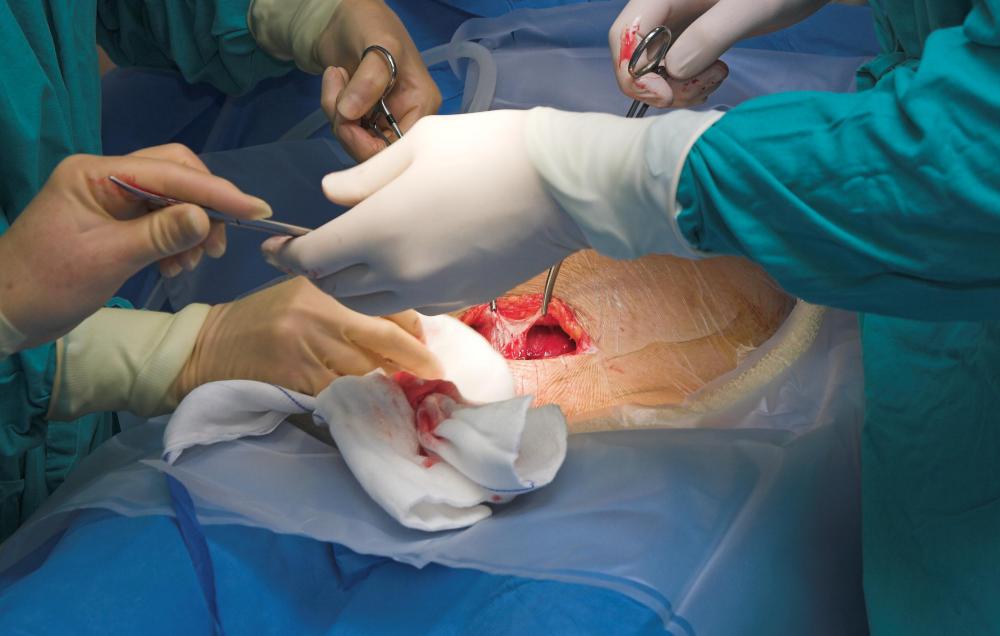At WiseGEEK, we're committed to delivering accurate, trustworthy information. Our expert-authored content is rigorously fact-checked and sourced from credible authorities. Discover how we uphold the highest standards in providing you with reliable knowledge.
What Factors Affect Umbilical Cord Separation?
The umbilical cord connects the developing fetus or embryo to the mother’s placenta. After birth, the cord is cut, and a small portion remains attached to the baby's navel. Between seven days and 12 weeks after birth, usually, this portion of the umbilical cord falls off by itself. Some factors that might lead to a delay in umbilical cord separation include the use of antiseptics, immunodeficiencies, cesarean section, prematurity, and neonatal sepsis.
At the birth of a baby, the umbilical cord will be clamped and cut no more than about 1.2 inches (3 cm) from the baby’s stomach. Keeping the cord clean and dry is important because of its potential as a source of infection for the baby. This can be accomplished by using non-perfumed soap and clean water. Overuse of antibiotics will restrict the normal colonization of the umbilicus by useful bacteria, leading to a delay in cord separation.

Leukocyte adhesion deficiency is an immunodeficiency disorder that affects the phagocytic blood cells. One of the effects of this disorder is that it causes a delay in the umbilical cord separation of infants. Severe instances of this disorder might be treated with an allogeneic bone marrow transplant.
Urachal anomalies might also cause a delay in separation. The urachus connects the dome of the embryo’s urinary bladder to the umbilical ring. If the umbilical cord does not close correctly, it might lead to the formation of a urachal cyst and delay separation.

An infection of the cord stump or the tissues surrounding it is known as omphalitis. This condition is most likely to affect newborns after five to nine days, or even earlier for premature babies. One of the factors leading to omphalitis is lack of proper hygiene during delivery, and one of the effects is a delay in umbilical cord separation.
Premature babies have a higher risk of delayed separation of the umbilical cord, in comparison with full-term babies. One of the reasons for this is a decrease in the normal bacterial colonization of the umbilicus.

Neonatal sepsis is caused by an infection of the blood of infants younger than 90 days. The baby might contract the infection from the mother during or before delivery. Symptoms of this infection include a swollen belly, diarrhea, seizures and a delay in umbilical cord separation.
It might take longer for the umbilical cord to separate in infants who are born via cesarean section when compared with infants who are born vaginally. The reason for this is the sterile nature of the cesarean operation. This inhibits the normal colonization of the cord by useful bacteria that aid in the separation.
AS FEATURED ON:
AS FEATURED ON:















Discussion Comments
My baby is four weeks old and her umbilical cord is not yet separated. What can I do? I am so worried.
Post your comments